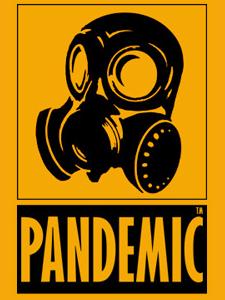Tag Archives: centers for disease control and prevention
PANDEMIC – Mystery illness in Cambodia solved, doctors say
 Phnom Penh, Cambodia (CNN) — The cause of a mysterious illness that has claimed the lives of more than 60 Cambodian children has been determined, medical doctors familiar with the investigation told CNN on Wednesday.
Phnom Penh, Cambodia (CNN) — The cause of a mysterious illness that has claimed the lives of more than 60 Cambodian children has been determined, medical doctors familiar with the investigation told CNN on Wednesday.
A combination of pathogens, disease-causing micro-organisms, is to blame for the illness, the World Health Organization, in conjunction with the Cambodian Ministry of Health, has concluded, the doctors said.
The pathogens include enterovirus 71, which is known to cause neurological disease; streptococcus suis, which can cause infections like bacterial meningitis in people who have close contact with pigs or with pork products; and dengue, which is transmitted by mosquitoes.
The inappropriate use of steroids, which can suppress the immune system, worsened the illness in a majority of the patients, the doctors said. The World Health Organization (WHO) is expected to advise health care workers to refrain from using steroids in patients with signs and symptoms of the infection, which include severe fever, encephalitis and breathing difficulties.
While not all the microorganisms were present in each patient, doctors concluded the illness was caused by a combination of them and worsened by steroid use.
The WHO sources did not want to be identified because the results of the health organization’s investigation have not yet been made public.
“I’m very confident for the reason of the epidemic,” said Dr. Phillipe Buchy, chief of virology at the Institut Pasteur in Cambodia and one of the doctors who cracked the case.
“The first thing that goes through your mind is, is this one of the usual suspects you haven’t detected before?” said Dr. Arnaud Tarantola, chief of epidemiology and public health at the Institut Pasteur. “If it is, has it mutated, or changed in a way that it causes more severe disease? Or is it something completely new?”
On the steroids issue, Tarantola said, “When you have a dying child, you try to use what you have at hand, and they were right to try that.” But, he acknowledged, “from the cases we reviewed, almost all of the children died, and almost all of them had steroids.”
Parents face anxious wait over mystery illness
“I think we can close the case and move ahead asking different questions,” Buchy said. “Not what is the illness, but now, how long has the virus been circulating? What is the extent of the circulation of the virus? How many mild diseases are we missing? That’s the next step.”
Over the past four months, doctors at Kantha Bopha Children’s Hospitals in Phnom Penh have been faced with the mysterious syndrome, which kills children so fast that nearly all of those infected with it die within a day or two of being admitted to the hospital.
Dr. Beat Richner, head of the children’s hospitals — which cared for 66 patients affected by the illness, 64 of whom died — said that no new cases of the illness had been confirmed since Saturday.
Other hospitals in the country have reported similar cases, but far fewer than the children’s hospitals in the capital, which are the most popular.
In the last hours of their life, the children experienced a “total destruction of the alveola(e) in the lungs,” Richner said. Alveolae are the air sacs where oxygen enters the bloodstream.
Most of the children who have contracted the illness have come from the south of the country, though health officials cannot find what is known as a cluster — a lot of cases coming from one specific area.
By June 29, the WHO had been contacted and Cambodian officials were scrambling to instruct health providers across the country to spread information about the illness as quickly as possible.
Officials search for clues in disease killing Cambodia’s children
The WHO and the Cambodian authorities’ announcement of the situation drew criticism from Richner, who said they were “causing unnecessary panic.”
The WHO said the unexplained nature of the outbreak obliged it to communicate the information.
Over the weekend, lab tests linked enterovirus 71 (EV71) to some of the cases. But the tests didn’t solve the whole puzzle and health officials continued their investigations, noting the detection of other elements like streptococcus suis and dengue.
The link to EV71 does not particularly help in the treatment of the illness, as there is no effective antiviral treatment for severe EV71 infections and no vaccine is available.
In milder cases, EV71 can cause coldlike symptoms, diarrhea and sores on the hands, feet and mouth, according to the journal Genetic Vaccines and Therapy. But more severe cases can cause fluid to accumulate on the brain, resulting in polio-like paralysis and death.
Outbreaks of the enterovirus “occur periodically in the Asia-Pacific region,” according to the CDC. Brunei had its first major outbreak in 2006. China had an outbreak in 2008.
Adults’ well-developed immune systems usually can fend off the virus, but children are vulnerable to it, according to the CDC.
“It looks like (EV71) has emerged strongly, probably because it hadn’t circulated with the same intensity in the past years,” Tarantola said.
Reported cases of streptococcus suis have risen significantly in recent years, notably in Southeast Asia, according to a paper that appeared last year in Emerging Infectious Diseases, a journal published by the Centers for Disease Control and Prevention in Atlanta.
The rainy season in Cambodia, which lasts from May to October, is a key problem in trying to control diseases like dengue. Because of a lack of indoor plumbing in many homes, people collect rainwater in vats, creating potential breeding grounds for mosquitoes.
In Cambodia, as with many places around the world, parents first try treating their child at home. If that doesn’t work, they typically then go to a local clinic. A hospital visit, which often involves a long trip, is a last resort.
Hungry? Try the new zombie diet
One of my favorite episodes of the classic television series “The Twilight Zone” was  titled “To Serve Man.” Aliens visited Earth and proceeded to help humanity solve its social, political and medical problems while setting up an exchange program. A tool was a book with the title of “To Serve Man,” which turned out to be a cookbook with recipes on how to prepare people as meals.
titled “To Serve Man.” Aliens visited Earth and proceeded to help humanity solve its social, political and medical problems while setting up an exchange program. A tool was a book with the title of “To Serve Man,” which turned out to be a cookbook with recipes on how to prepare people as meals.
That imaginative episode of the sci-fi series seems to be playing out in a slightly different form the past two months. Zombie-mania is taking hold of the country, with reports of people eating each other and other creatures.
The entertainment industry is filled with movies and television shows depicting zombies in all of their mindless, flesh-eating gory glory. A cottage industry has tips, products and processes to protect humanity from the living dead.
But zombies aren’t just for entertainment anymore. They have infiltrated real life.
Following the news recently has been a trip through weirdville, with reports on cannibalism and assorted stomach-turning events. Movies, television shows and social media conversations have elevated the topic to near maniacal status, focusing especially on the zombie potential.
One of the first reports came from Miami on May 26, as police shot a naked man eating another man’s face. A few days later, a college student in Maryland told police he killed a man and then ate his heart and part of his brain.
Then things got really weird. In New Jersey, a man stabbed himself 50 times and threw bits of his own intestines at police, who then pepper-sprayed him but still had a hard time bringing him down.
Also in May, police discovered a video that appeared to show Canadian porn performer Luka Magnotta, 29, slashing his bound young lover with an ice pick. He then reportedly abused and dismembered the corpse before eating some of the man’s remains with a knife and fork. Detectives in Montreal allege Magnotta then mailed some body parts to members of the Canadian Parliament. Magnotta was arrested about two weeks later in Germany.
The lunacy continued with other reports in June, including one of a man who ate his dog.
While some are equating the rise of this type of incident to zombies and end-of-the-world prophecies, cooler heads are blaming a more mundane and man-made cause: drug abuse. The New Jersey event is being specifically blamed on a drug mixture known as “bath salts.”
Florida officials describe bath salts as a synthetic drug that reportedly produces “an extreme high of euphoria” and is comparable to amphetamines and cocaine. The mixture is sold as potpourri and incense at liquor stores, gas stations and head shops. Officials said in order to know exactly what is in each package you have to seize them from the store and test them in a lab.
Some state legislatures, Michigan included, have taken steps to outlaw the product. The federal Centers for Disease Control and Prevention in Atlanta released a statement saying there is no Zombie Apocalypse on the horizon.
Personally, I think the CDC’s statement is just a diversion to hide the truth.
In the meantime, bolt the doors, stockpile the food and keep your loaded weapons nearby. Remember, zombies are already dead. The only way they can be stopped is by destroying the brain, according to people who have studied this sort of thing.
ZOMBIE OUTBREAK – PLAN FOR SURVIVAL
“They’re coming to get you, Barbara.” Ever since George Romero’s 1968 classic “Night of the Living Dead,” America has been obsessed with zombies. But some days the zombie apocalypse doesn’t feel so far-fetched. Before you go boarding up your windows, loading your shotgun and stampeding to the nearest cellar, finalize your survival plan. After all, the directo of the Centers for Disease Control and Prevention, Ali Khan, noted in his “Zombie Preparedness” article, “If you are generally well-equipped to deal with a zombie apocalypse, you will be prepared for a hurricane, pandemic, earthquake or terrorist attack.” Oh, joy!
• Somebody has poisoned the water hole: Any viewer of AMC’s “The Walking Dead” knows all too well what happens when a “swimmer” gets into the water supply. The U.S. Geological Survey estimates that the average human can last about a week without water, so make sure to stockpile it before it gets contaminated.
You’ll need about a gallon of water per person per day. The six-gallon Reliance Desert Patrol container ($19.99) is durable and easy to carry. Fill up enough of them so that your water supply lasts several days.
Once you’re forced to abandon your shelter — and you most definitely will be — you’re going to need the Katadyn Pocket Water Microfilter ($295.90). Sold on Amazon, this filter is one of the best in the market for decontaminating outdoor water found in streams, rivers or puddles. The price is hefty, but the cost of drinking zombie guts is higher. .
• Don’t wind up on the menu: As long as you have water, you can survive 30 to 40 days without food. However, after a few days, your body and brain will go weak. In a stressful situation like a zombie assault, a sharp mind and healthy body are vital.
If MREs are good enough for battlefield combat, they’re (hopefully) good enough for zombie warfare. Load up on MREs (Meals Ready-to-Eat) ($94.99 for a 12-pack) from Nitro-Pak. If your mouth’s not watering yet, feast your eyes on the canned chicken, beef, pork and turkey ($55.99 for four 28-ounce cans) from Canned Chicken By Survival Cave Food. Mmm, almost as good as fresh brains!
• Dress to kill: You’re going to need some heavy-duty clothing — preferably something that can withstand a life-threatening bite. Zombie expert and author of “Zombie CSU” Jonathan Maberry suggests body armor made from carpet because it’s hard to chew through and can be found practically anywhere.
The Tru-Spec BDU Trouser ($32.90) and Tru-Spec TRU Combat Shirt
($58.90) from AMFO provide tear-resistant, moisture-wicking skin coverage. Bonus: The garments will also allow you to blend in with those corrupt military personnel that always seem to weasel their way into zombie cinema.
For footwear, get something lightweight, durable and waterproof. The Converse 8877 Waterproof SideZip Tactical Boot ($99.99) is perfect. It even has arch support and heel cushions to supply comfort during those long treks through the city and wilderness.
• My personal weapon of choice is a machete for one simple reason: It doesn’t require reloading. The Condor Tool and Knife 14-Inch Golok Machete ($26.95) from KnifeCenter.com has a solid handle and razor-sharp edge perfect for sending heads a-flying.
• Always remember: Safety first! You’ll need to be able to patch up just about any injury on the go. The 299-piece All-Purpose First Aid Kit ($18.49) from Utility Safeguard includes everything from alcohol cleansing pads and aspirin to an emergency blanket and gauze dressing. The only thing this one-stop kit doesn’t offer is a cure for a zombie bite.
If you aren’t familiar with Max Brooks’ “The Zombie Survival Guide: Complete Protection From the Living Dead” ($10.98), buy it at Barnes & Noble ASAP. The book covers everything from zombie physiology and defense tactics to how to prepare your home for a siege.
Another must-read is Roger Ma’s “The Zombie Combat Manual: A Guide to Fighting the Living Dead” ($13.98). It’ll coach you on how to emerge victorious from a close hand-to-hand battle with a living corpse.
Play video games while you still can. Get an Xbox 360 and buy “Left 4 Dead 2″ ($34.99) at GameStop. It lets you take on the infected with objects like a frying pan, ax, chainsaw and baseball bat. Grab some friends and play in multiplayer mode. Now you’ll know who is skilled with melee weapons. Start saying your goodbyes to the friends who aren’t.
GERM OUTBREAK AT CDC – Security lapses found at CDC bioterror lab in Atlanta
A federal bioterror laboratory already under investigation by Congress for safety issues has had repeated incidents of security doors left unlocked to an area where experiments occur with dangerous germs, according to internal agency e-mails obtained by USA TODAY. In one incident, an unauthorized employee was discovered inside a restricted area.
has had repeated incidents of security doors left unlocked to an area where experiments occur with dangerous germs, according to internal agency e-mails obtained by USA TODAY. In one incident, an unauthorized employee was discovered inside a restricted area.
A Centers for Disease Control and Prevention spokesman says the unsecured door incidents in 2010 and 2009 inside its Emerging Infectious Diseases Laboratory in Atlanta were “not an acceptable practice of the agency.” At no time, though, were bioterror organisms such as anthrax at risk of falling into the wrong hands, he said.
“The doors in question here are but one layer of multiple layers of security when it comes to both the animals and the agents that are worked on,” CDC spokesman Tom Skinner said. “The security measures we have in place, without going into detail, make it close to impossible for anyone who doesn’t have approved access to the agents to get their hands on them.”
The e-mails document doors being left unlocked in the building’s high-containment lab block, which includes an animal-holding area and Biosafety Level 3 labs where experiments are done on microbes that can cause serious or potentially fatal diseases and can be spread through the air. Anthrax, monkeypox, dangerous strains of influenza and the SARS virus are examples.
One e-mail by a CDC safety manager describes an unauthorized man discovered in the animal-holding area and multiple doors that were unsecured at the time. Skinner says the man was a CDC scientist but was not immediately able to provide further details about why he was in the restricted area. Skinner said the man was in an outer corridor of the BSL-3 suite of labs.
For safety and security, access to BSL-3 labs is restricted and they are supposed to have special airflow systems designed to help keep organisms inside. Problems with the airflow systems revealed by USA TODAY, including a February incident where air briefly blew out of a lab into a “clean” hallway, prompted the House Energy and Commerce Committee this week to launch a bipartisan investigation into safety issues. The committee is examining whether CDC — which inspects its own labs along with others nationwide that handle bioterror agents — is complying with federal safety requirements at the lab building, also known as CDC Building 18.
E-mails written by CDC Safety and Occupational Health manager Patrick Stockton indicate the lab has had security lapses that Rutgers University biosafety expert Richard Ebright said may be a “major violation” of security standards for labs that work with potential bioterror agents.
In a November 2009 e-mail, Stockton wrote to several CDC officials involved with Building 18’s high-containment laboratory area: “We are continuing to have some difficulties with doors remaining unsecured in the (high-containment lab) area. … If we continue to have issues, we will need to begin looking at individual access rights for these doors.” The particular issue involved expansion sections of the doors, used to accommodate large pieces of equipment. The “through-bolts are not being re-engaged, and the doors are remaining unsecured,” Stockton wrote.
Five months later, the expansion doors continued to be left unlatched and unsecured. According to an April 29, 2010, e-mail to more than a dozen CDC officials involved with the lab building, Stockton wrote that earlier that day “an individual with no access and no escort” was found in the research animal-holding area of the high-containment lab area.
The e-mail continued: “He did not have access and at this point we are not sure how he got there.” Stockton wrote that he talked to program and animal staff and “no one from their programs let this person in.” CDC’s Office of Security and Emergency Preparedness, which is a liaison to the Department of Homeland Security, was investigating, the e-mail said. Homeland Security officials did not respond to questions about the CDC security incidents.
Stockton’s e-mail says that after the incident he and the building’s high-containment lab manager, Anthony Sanchez, walked the entire high-containment block and found two doors unsecured. “This can certainly happen by mistake on occasion but we have addressed this issue in the past and now it seems to be a common failure point. … It is imperative that all doors leading to high containment remain secured,” Stockton wrote.
Stockton and Sanchez didn’t grant interviews. CDC spokesman Skinner said: “Doors being left open by staff is not a standard practice. It’s unacceptable, and our safety office has sent out numerous reminders to staff of the importance of staff practicing good physical security.”
Skinner said he is unaware of any other door security incidents after the one in April 2010. He emphasized that multiple layers of security in the building would have prevented any unauthorized person from accessing germs that hold the potential to be used as bioterror weapons. “The bottom line is, worker safety and the public safety were never compromised,” he said.
Ebright, of Rutgers University, expressed concern about the repeated issues revealed in news reports about Building 18 since the $214 million building opened in 2005, including articles in 2007 about backup generators that failed to keep airflow systems working during a power outage, and in 2008 about a high-containment lab door that the CDC sealed with duct tape after an incident where an airflow system malfunctioned and sent potentially contaminated air into a “clean” corridor.
The “documents you have obtained over the past several years make it clear that there has been a pattern of corner-cutting and negligence at CDC biocontainment facilities —starting with the failure to include provisions for emergency backup power, and encompassing inadequate door seals, improper airflow, jury-rigged repairs, and unsecured access points,” Ebright said.
If the security issues described in Stockton’s 2010 e-mail continue and bioterror agents are being used in that area, Ebright said, “then heads should fall.”
The CDC currently is responsible for inspecting the safety and security of its labs that work with bioterror agents. Skinner said CDC has a 66-year record of operating its labs safely.
The CDC said this week, in the wake of USA TODAY’s reports, that it is considering having its labs’ safety reviewed by an outside agency, such as the U.S. Army Medical Research Institute for Infectious Diseases (USAMRIID).
Biosafety and biosecurity concerns have been the subject of previous congressional concerns. A 2009 report by the U.S. Government Accountability Office, the investigative arm of Congress, examined the potential risks posed by the growing number of high-containment labs doing research on potential bioterror agents. It found that while lab accidents are rare, they do occur, primarily because of human error and systems failures.
It also noted that insiders working in the labs can pose risks, pointing to the Federal Bureau of Investigation‘s allegation that Bruce Ivins, a scientist at USAMRIID in Fort Detrick, Md., was the “sole culprit” in the 2001 anthrax attacks. While he was under investigation in 2008, Ivins died of a drug overdose.
“There are arguably two aspects to insider risk: the motive of the insider and the ability to misuse material and laboratory facilities,” the GAO wrote in its report.
